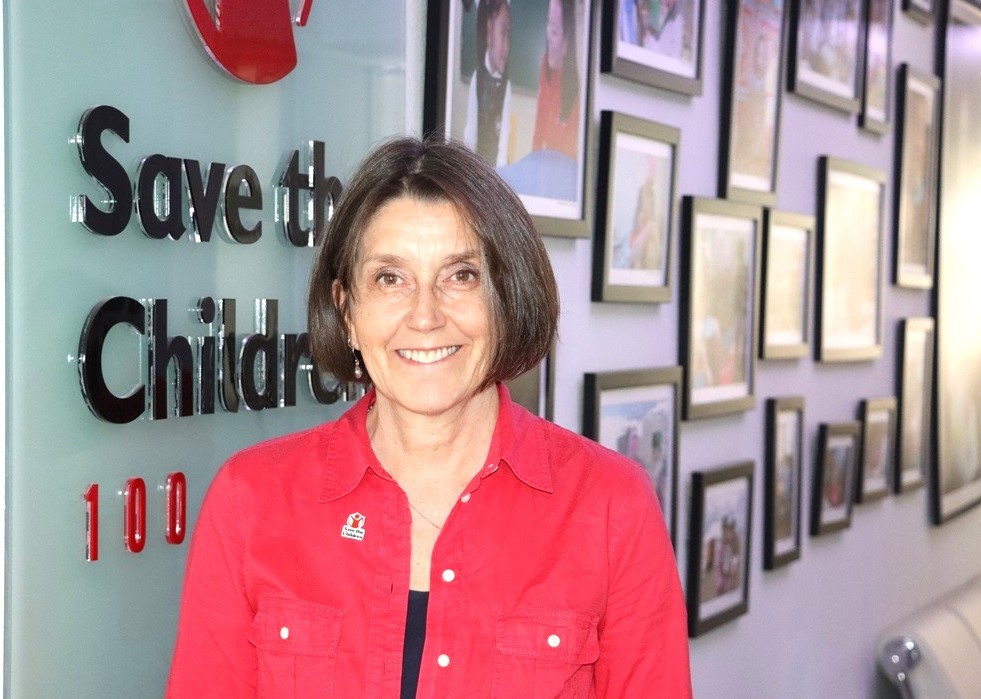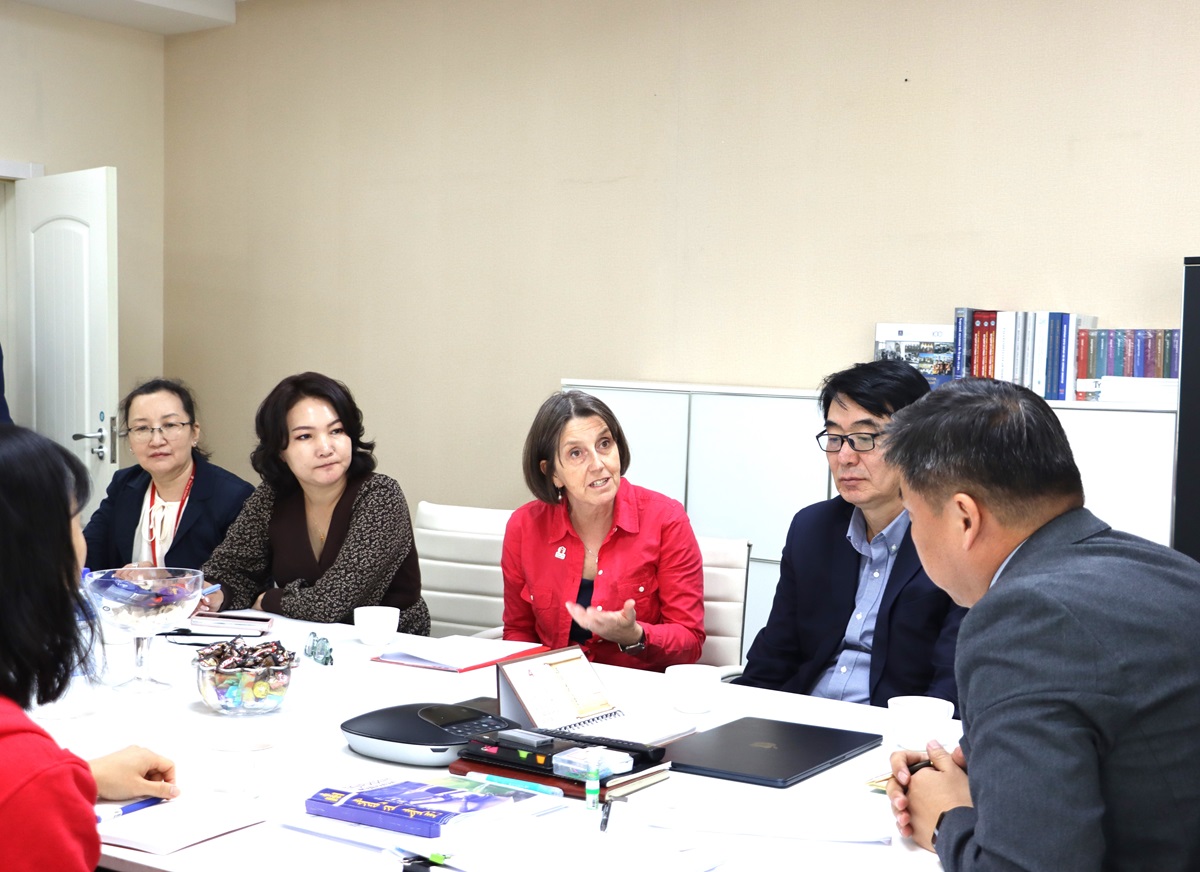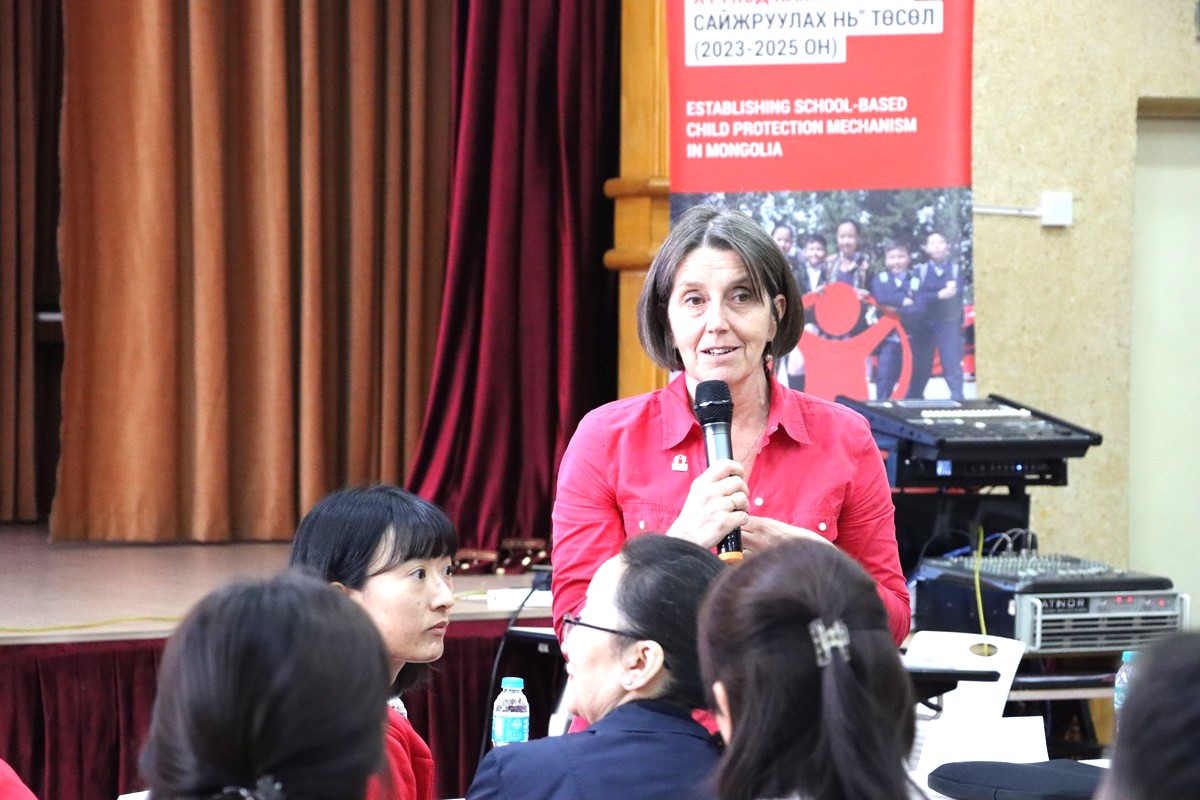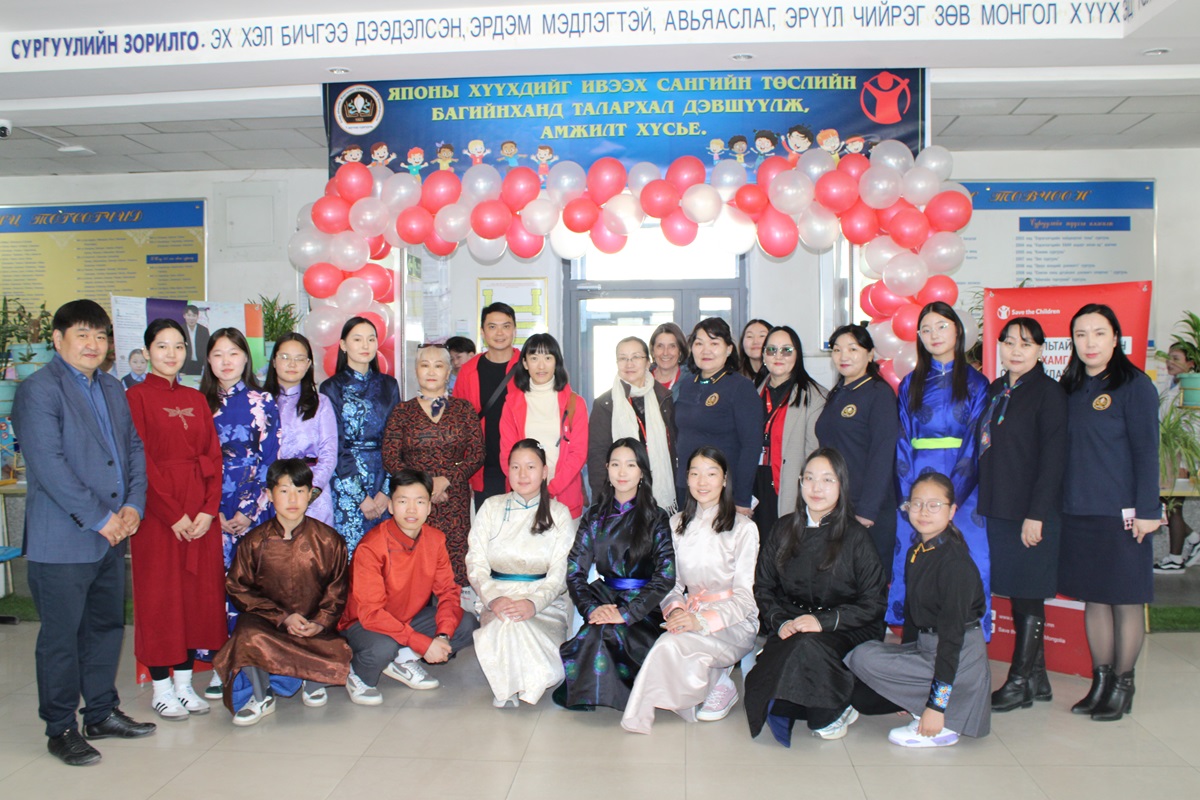Helen I’Anson: The results are clearly impressive in all the locations we visited
Interview with Helen I’Anson, Director of International Programmes of Save the Children Hong Kong. She and her team visited Mongolia to meet with Save the Children Mongolia staff and learn about the results of the ongoing project “Establishing School-Based Child Protection Mechanism in Mongolia” funded by Save the Children Hong Kong.
– Please tell me about yourself?
– I am Helen I’Anson, Director of International Programmes at Save the Children Hong Kong. I am from the UK and I have worked for SC Hong Kong for four years. Before that I worked for SC in many different offices in Asia and Eastern Europe and for a different INGO in Africa. I love visiting new countries and learning about new cultures and especially to see our work for and with children in different parts of the world.
– Have you been to Mongolia before?
– This is my first time visiting Mongolia and I’m very lucky as visiting the project SCHK funded means I get to see different places around UB as well as the western part of the country. It’s a beautiful place and the people have been so welcoming and hospitable.
– In your opinion, what was the need to implement this project in Mongolia?
– I can see that there was a strong need to implement this project as professionals who work to support children in their communities and families were not always clear what their role was protect children. Children were not fully aware about their rights and had few opportunities to share their ideas or thoughts with adults at school or at home. Although there is a law to protect children’s rights in Mongolia, teachers and community professionals didn’t know how to practically implement an effective protection system to keep children safe. This project has given them knowledge and practical skills to strengthen child protection in the local area.


– What did you think after meeting the beneficiaries of this project. For example, children, parents, school staff and Multi-Disciplinary Team members?
– I was so impressed meeting the beneficiaries of this project, seeing their strong commitment to implementing what they had keanied to better protect children in their community. Parents spoke passionately about how much more they understood about how to support their children’s healthy development and many ideas they had to help other parents in their local area so more children can be protected. Children told us how they were better able to help their classmates with psychological support and how happy they were that their ideas for making the school safer were listened to and implemented by the school management. In every location we saw how the local community took the knowledge from the project training and implemented it slightly differently to meet the local priorities. This flexibility is a key strength of the project in my opinion. Everywhere we visited, local leadership at school, and governors at khoroo, soum and province level showed string commitment to the project objectives which is critical for success and buy in from all stakeholders. I felt very proud of how SCHK has helped support this project which has empowered local stakeholders to take ownership. SC staff in Mongolia have done a great job to build on their learning and experience from previous projects to deliver some impressive results. In each location I was truly impressed to see strong teamwork across MDT, parents and school, and a supportive and professional Save the Children in Mongolia team committed to children’s rights.


– You have seen the progress of the project. What do you think about the project results?
– The results are clearly impressive in all the locations we visited. In each location the results are slightly different, but this is a strength of the project’s model as it fosters local ownership and ensures the local community across school, MDT, parents and children drive the focus and priorities for the local implementation. The results are clear in the passionate voices from parents, teachers and MDT members who all told us about significant changes in the past 2 or so years since the project started.
– What do you think about current challenges and future opportunities?
– There are challenges in some areas with some trained professionals from school or MDT moving to different locations and other turnover of stakeholders. This is somewhat inevitable. However, because the foundation of the project is based on a broad group of stakeholders the impacts of individual turnover can be minimised to some extent. Once we have evidence of the project impact through the 14 schools and learning for improvements to the model, I think there is a clear opportunity to expand the model across more provinces. We must make every effort to showcase the results to the Government, so they we can influence them to adopt this approach to strengthen the protection and promote the participation for every child across every community in Mongolia.
-Thank you.

